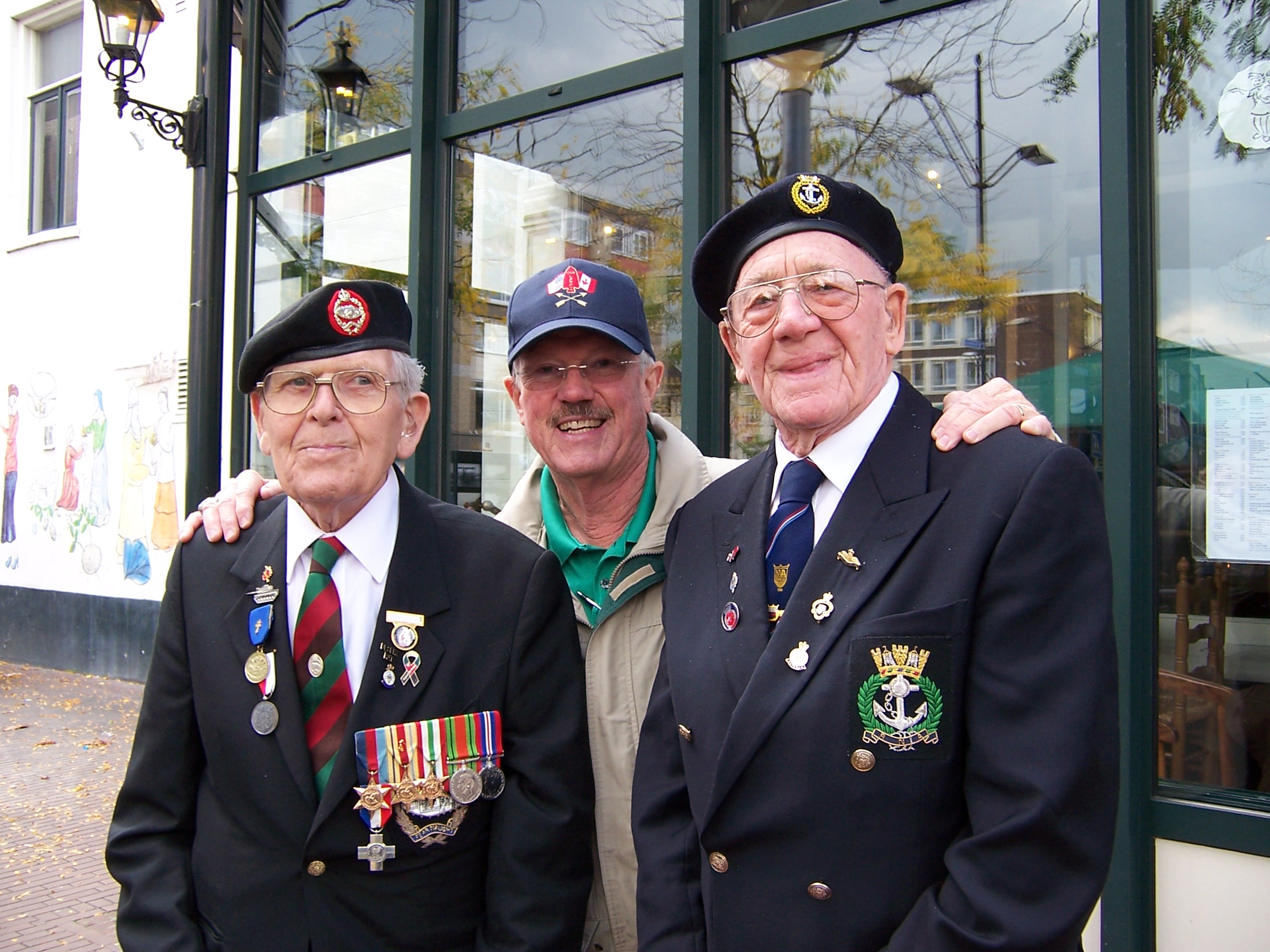A member of the 82nd Airborne Division is about to enter a canvas Goatley boat. Normally used by engineers to build bridges, the ‘troopers’ of the 82nd crossed the Waal River in Goatley boats. They didn't have enough paddles. Many troopers used the butt of their M-1 rifles to paddle.
 The British gentleman on the left was a member of a tank crew in the British 8th Army. Ken Beaton is in the middle. The gentleman on the right was a British merchant sailor. He was on three torpedoed merchant ships in the frigid North Atlantic.
The British gentleman on the left was a member of a tank crew in the British 8th Army. Ken Beaton is in the middle. The gentleman on the right was a British merchant sailor. He was on three torpedoed merchant ships in the frigid North Atlantic.